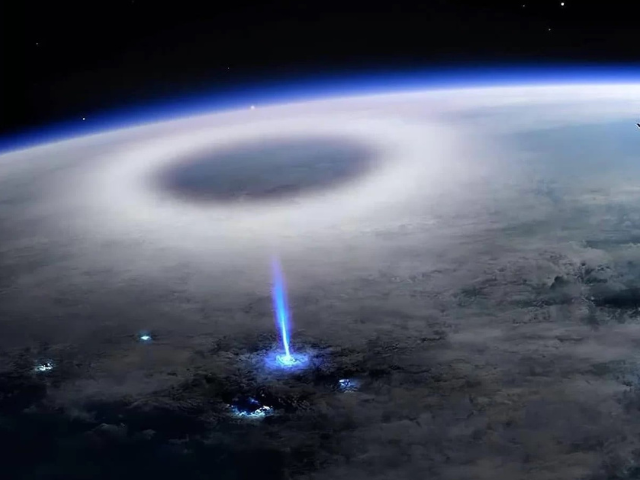What are these 'blue jets' seen from space?
Lightning-like flashes extend up to 30 miles high but are hard to see from ground due to brief duration, storm clouds

A rare atmospheric phenomenon known as blue jets has been observed shooting upward from storm clouds into the stratosphere.
These lightning-like flashes can extend up to 30 miles high but are difficult to see from the ground due to their brief duration and the obscuring storm clouds.
In 2019, instruments aboard the International Space Station (ISS) captured five blue flashes and a blue jet above a storm cloud near Nauru in the Pacific Ocean. These significant observations contributed to a study published in Nature, enhancing understanding of the origins and behaviour of blue jets.
Blue jets occur when the positively charged upper section of a storm cloud interacts with a negatively charged layer just above it. This interaction leads to a discharge of static electricity in the form of a brief blue flash that shoots skyward. Unlike typical lightning, which strikes between clouds or from clouds to the ground, blue jets ascend into space.
The blue jet recorded over Nauru reached an altitude of 32 miles and was visible for only 10 to 20 milliseconds. It was detected using various instruments, including optical cameras, photometers, and a gamma-ray detector mounted on the ISS.
Accompanying these jets were ultraviolet flashes known as ELVES, which signify complex electrical activity in the upper atmosphere.
Studying blue jets and related phenomena, such as red sprites, is crucial because they may disrupt radio waves used in communication technologies.
Furthermore, these electrical discharges could influence greenhouse gas concentrations and affect the Earth’s ozone layer. Researchers like Victor Pasko from Penn State stress the importance of understanding these mysterious discharges for climate science and communication systems.
The research conducted aboard the ISS provides a unique perspective on this extraordinary occurrence, bringing scientists closer to deciphering the intricate electrical processes occurring above storm clouds.



















COMMENTS
Comments are moderated and generally will be posted if they are on-topic and not abusive.
For more information, please see our Comments FAQ